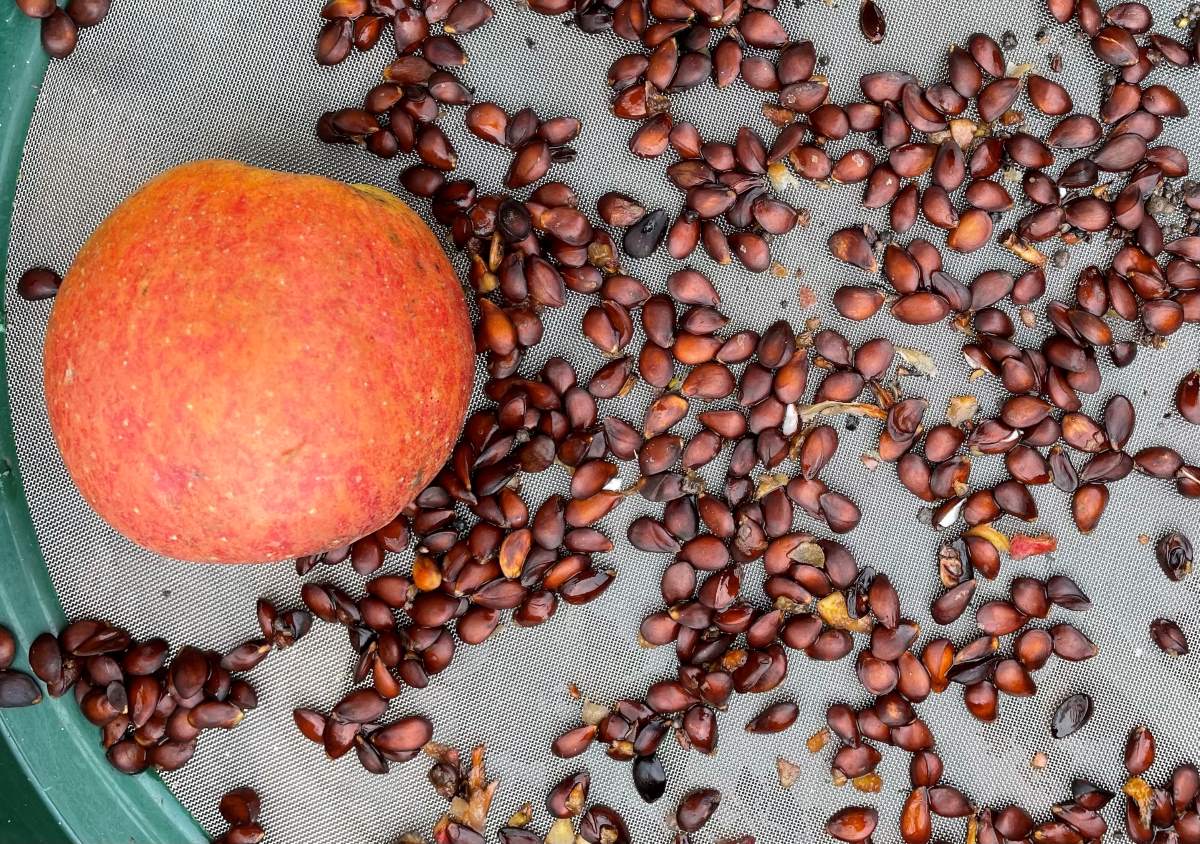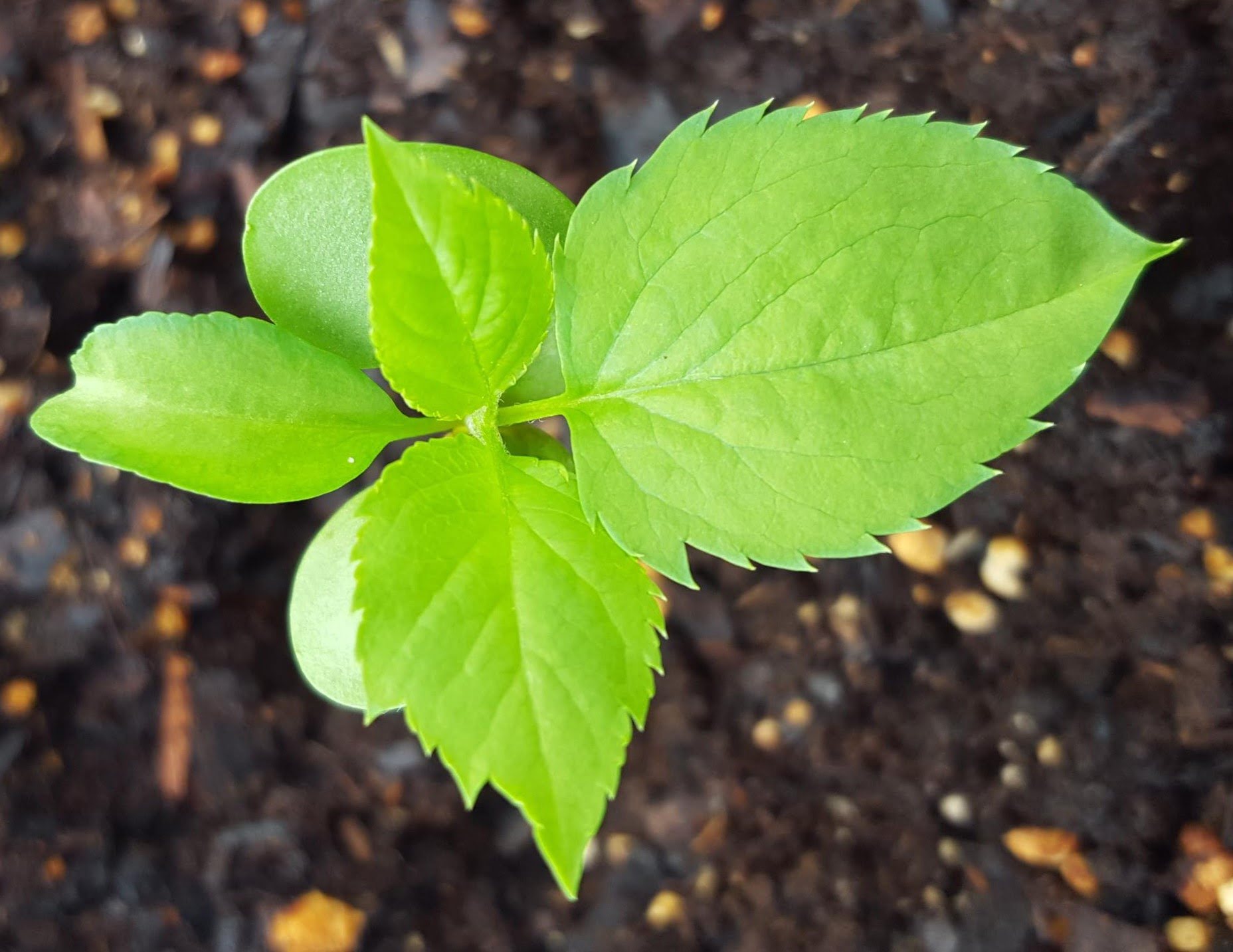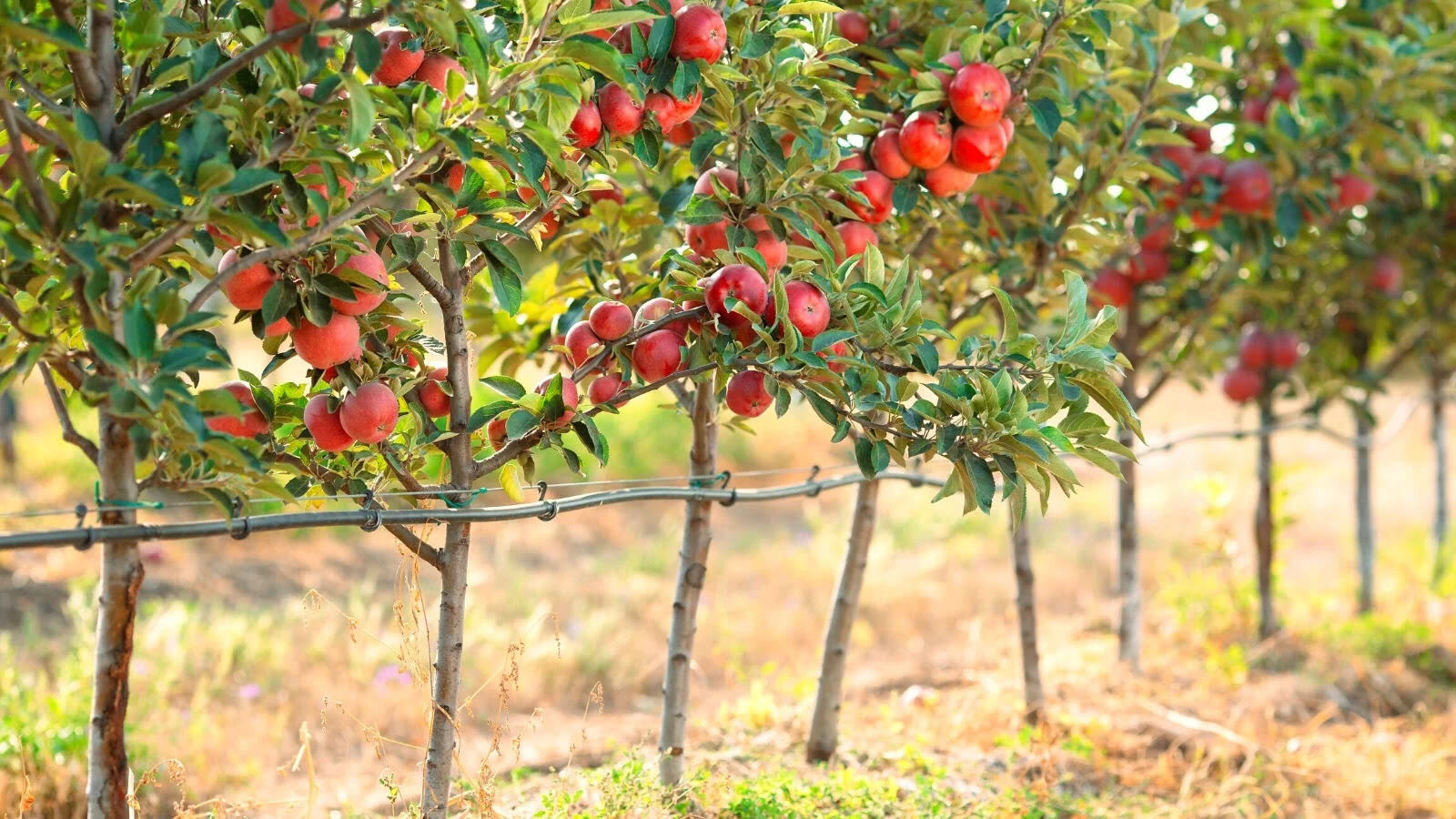

Articles
How To Store Apple Seeds Long Term
Modified: January 9, 2024
Looking for tips on storing apple seeds long term? Check out our informative articles to learn how to properly preserve and store apple seeds for future use.
(Many of the links in this article redirect to a specific reviewed product. Your purchase of these products through affiliate links helps to generate commission for Storables.com, at no extra cost. Learn more)
Introduction
Apple seeds are not only the foundation of delicious apple trees but also a symbol of renewal and growth. Whether you are an avid gardener or simply want to preserve the legacy of your favorite apple variety, knowing how to store apple seeds long term is essential. By storing them properly, you can ensure their viability for future planting and enjoy a bountiful harvest of crisp, juicy apples.
In this article, we will explore the importance of storing apple seeds, the steps to prepare seeds for long-term storage, selecting the right storage container, creating ideal storage conditions, monitoring seed viability, and reviving stored apple seeds. By following these guidelines, you can extend the lifespan of your apple seeds and preserve their potential to grow into thriving apple trees.
So, let’s dive in and learn how to store apple seeds for the long term!
Key Takeaways:
- Preserve apple diversity, save money, and adapt to local climates by storing apple seeds. Enjoy the journey of nurturing apple seeds into thriving trees and savoring the fruits of your labor for years to come.
- Select, prepare, and store apple seeds to ensure successful germination and growth. Embrace the surprises of discovering new apple varieties and contribute to the preservation of apple diversity for future generations.
Read more: How To Store Apples Long-Term
Importance of Storing Apple Seeds
Storing apple seeds is not only a practical step for gardeners and apple enthusiasts but also crucial for the preservation and cultivation of different apple varieties. Here are some reasons why storing apple seeds is important:
- Biodiversity: Apple seeds contain the genetic material that determines the unique characteristics of each apple variety. By storing and preserving these seeds, we can maintain the biodiversity of apple trees, ensuring the continuation of different flavors, colors, and textures.
- Self-Sufficiency: Storing apple seeds allows you to become self-sufficient in growing apple trees. Instead of relying on commercial nurseries or purchasing young trees, you can start your own orchard from seeds, saving money and having complete control over the growth process.
- Climate Adaptation: Apple trees that grow from locally stored seeds are more likely to adapt to the specific climate and conditions of your region. By storing seeds from apple trees that are already thriving in your area, you can develop varieties that are better adapted to your local environment.
- Preserving Heirloom Varieties: Many apple varieties are considered heirlooms, passed down through generations for their unique flavors and historical significance. By storing the seeds of these heirloom varieties, we can ensure their survival and continue the legacy of these treasured apples.
- Experimentation and Preservation: Storing apple seeds gives you the opportunity to experiment with cross-pollination and develop new apple varieties. This can lead to exciting discoveries and contribute to the preservation of apple diversity for future generations.
By recognizing the importance of storing apple seeds, we can actively participate in the preservation, diversity, and sustainable cultivation of apple trees. Now that we understand why it is crucial to store apple seeds, let’s explore the steps to prepare them for long-term storage.
Choosing the Right Apple Seeds
When it comes to storing apple seeds, it’s important to choose the right seeds to maximize the chances of successful germination and growth. Here are some tips for selecting the right apple seeds:
- Freshness: Choose apple seeds that are fresh and fully matured. Fresh seeds have a higher likelihood of germination compared to old or dried-out seeds. Look for seeds that are plump, firm, and have a healthy coloration.
- Variety: Select the seeds from apple varieties that you enjoy or that have desirable traits. Whether it’s the sweetness of a Honeycrisp or the tartness of a Granny Smith, choose the seeds of the apple varieties that align with your preferences and goals.
- Pollination Method: Consider the pollination method of the apple variety you wish to store seeds from. Some apple varieties require cross-pollination, meaning that they need to be pollinated by another apple tree of a different variety for fruit production. If you’re unsure about the pollination method, do some research beforehand to ensure you have the right seeds.
- Open-pollinated or Hybrid: You have the option to choose either open-pollinated or hybrid apple seeds. Open-pollinated seeds are derived from naturally pollinated flowers, resulting in offspring with similar characteristics to the parent tree. Hybrid seeds, on the other hand, are the result of intentional cross-pollination between two different apple varieties, resulting in offspring with unique traits. Consider your goals and preferences when choosing between open-pollinated and hybrid seeds.
- Source: Obtain apple seeds from reputable sources such as nurseries, seed exchanges, or reliable local orchards. This ensures that you are getting quality seeds from healthy and well-maintained apple trees.
By selecting the right apple seeds, you set the foundation for successful germination and the development of healthy apple trees. Once you have chosen the seeds, the next step is to prepare them for long-term storage. Let’s explore the necessary preparations in the next section.
Preparing Apple Seeds for Long-Term Storage
Before storing apple seeds for the long term, it is important to properly prepare them to ensure the best chances of successful germination in the future. Here are the steps to take when preparing apple seeds for long-term storage:
- Extracting the Seeds: Start by collecting ripe apples from the tree or purchasing them from a market. Cut the apples open and remove the seeds. Rinse them under cool water to remove any fruit residue.
- Drying the Seeds: Once you have extracted the seeds, place them on a paper towel or a fine mesh screen to air dry. Avoid using heat or direct sunlight, as this can damage the seeds. Allow the seeds to completely dry for a few days until they are no longer moist to the touch.
- Stratifying the Seeds (Optional): Stratification is a process that mimics the natural winter conditions the seeds would experience in the ground. Some apple varieties benefit from stratification to improve germination rates. To stratify the seeds, place them in a plastic bag with a moistened paper towel and refrigerate them for about 8 to 12 weeks. This triggers the seeds’ natural dormancy and prepares them for planting.
- Labeling and Packaging: It is essential to label your apple seeds with the name of the variety and the date of collection. This will help you keep track of the seeds’ age and characteristics. Store the labeled seeds in airtight containers or sealable plastic bags to protect them from moisture and pests.
By following these preparation steps, you can ensure that your apple seeds are in optimal condition for long-term storage. The next step is to select a suitable storage container to protect the seeds from environmental factors. Let’s explore this in the following section.
Selecting a Storage Container
Choosing the right storage container for your apple seeds is crucial to maintain their viability and protect them from adverse environmental conditions. Here are some considerations when selecting a storage container:
- Airtightness: It is important to choose a container that is airtight to prevent moisture and air exchange, which can lead to seed deterioration. Look for containers with tight-fitting lids or sealing mechanisms to create a barrier against external factors.
- Material: Opt for containers made of materials that are moisture-resistant and offer protection from light and fluctuations in temperature. Glass jars or plastic containers with airtight seals are commonly used for storing apple seeds.
- Size: Consider the amount of seeds you have and choose a container that provides enough space for proper storage without overcrowding. Avoid using containers that are too large, as excess air inside the container can negatively affect seed viability.
- Transparency: If possible, select a transparent or translucent container to easily monitor the condition of the seeds without having to open the container frequently. This allows you to check for signs of mold, moisture, or insect infestation.
- Labeling: It’s important to label the storage container with the variety and date of seed collection. This will help you keep track of the seeds and ensure you know which variety is stored in each container.
Remember to clean and sanitize the storage container before transferring the seeds to prevent any contamination or disease spread. Once you have chosen the right storage container, the next step is to create the ideal storage conditions to safeguard the long-term viability of the apple seeds. Let’s explore this in the following section.
Store apple seeds long term by drying them thoroughly, then placing them in an airtight container such as a glass jar or airtight bag. Store in a cool, dark place such as a refrigerator to maintain viability.
Read more: How To Preserve Seeds Long Term
Creating the Ideal Storage Conditions
Creating the ideal storage conditions for your apple seeds is essential to maintain their viability and ensure their long-term storage success. Here are some key factors to consider when creating the ideal storage environment:
- Temperature: Apple seeds are best stored in cool temperatures ranging from 32°F to 45°F (0°C to 7°C). A cool, consistent temperature will keep the seeds dormant and prevent premature sprouting.
- Humidity: Low humidity levels are crucial for storing apple seeds. Aim for humidity levels between 25% and 35% to prevent mold growth and seed deterioration. If the humidity in your storage area is higher, consider using desiccant packs to absorb excess moisture.
- Light: Apple seeds should be stored in a cool, dark place to prevent exposure to light. Light can stimulate seed germination, leading to premature sprouting and reduced viability.
- Air Circulation: While it’s important to seal the storage container to prevent moisture exchange, some air circulation is beneficial to prevent the buildup of excess humidity. Avoid storing the seeds in a completely airtight environment to allow for some airflow.
- Stability: Choose a storage location that provides stable conditions, avoiding temperature fluctuations and extreme variations. Rapid temperature changes can negatively impact seed viability.
It’s also important to regularly monitor the storage conditions and seeds for any signs of mold, pests, or decay. Check on the seeds periodically and ensure that the storage container remains sealed and free from moisture. If you observe any issues, take immediate action to address them and secure the seeds’ long-term survival.
By following these guidelines and creating the ideal storage conditions, you can maximize the longevity of your stored apple seeds and increase the chances of successful germination in the future. But how do you know if your stored seeds are still viable? Let’s explore how to monitor seed viability in the next section.
Regularly Monitoring Seed Viability
Regularly monitoring the viability of your stored apple seeds is crucial to ensure their long-term storage success. Over time, the viability of seeds can decrease, making it important to periodically assess their condition. Here are some methods for monitoring seed viability:
- Germination Test: Conducting germination tests is an effective way to determine seed viability. Take a sample of seeds from your stored collection and plant them in a suitable growing medium. Monitor their progress and assess the percentage of seeds that successfully germinate. This will give you an indication of the overall viability of your stored seeds.
- Seedling Health: If you have planted some of your stored seeds and they have grown into seedlings, observe the health and vigor of the seedlings. Healthy seedlings with strong growth indicate good seed viability.
- Visual Inspection: Regularly inspect the stored seeds for any signs of mold, discoloration, or insect infestation. Healthy seeds should maintain their color and firmness, without any visible signs of deterioration.
- Seed Weight: Another way to assess seed viability is through seed weight. Comparing the weight of stored seeds to fresh seeds can indicate any loss in moisture content and viability. However, this method may require a scientific scale to measure the weight accurately.
Depending on the species and storage conditions, seed viability can vary. Some apple seeds may remain viable for several years, while others may have a shorter lifespan. By regularly monitoring the viability of your stored seeds, you can take appropriate actions such as retesting, replanting, or collecting fresh seeds if necessary.
Remember to record your observations and update the seed labels accordingly for future reference. This will help you track the viability of different seed batches and make informed decisions when it comes to planting.
In the next section, we will explore how to revive stored apple seeds that have been successfully stored for the long term.
Reviving Stored Apple Seeds
Reviving stored apple seeds is an exciting process that allows you to bring your carefully stored seeds back to life and start the journey of growing new apple trees. Here are the steps to revive stored apple seeds:
- Pre-Soaking: Before planting, some apple seeds benefit from a pre-soaking process to help break their dormancy. Soak the seeds in room temperature water for 24 to 48 hours. This soaking can help soften the seed coat and promote germination.
- Stratification: If you haven’t stratified the seeds during the preparation stage, now is the time to provide them with a period of cold stratification. Place the pre-soaked seeds in a dampened paper towel or peat moss, seal them in a plastic bag, and refrigerate them for 8 to 12 weeks.
- Sowing the Seeds: Once the stratification period is complete, it’s time to plant the seeds. Use a well-draining potting mix or seed-starting medium. Sow the seeds at a depth of about half an inch, ensuring good soil-to-seed contact.
- Moisture and Light: Keep the soil consistently moist but not waterlogged. Place the planted seeds in a warm location with indirect sunlight or under grow lights. Maintaining a temperature between 70°F and 80°F (21°C and 27°C) will encourage germination.
- Patience and Tending: Germination times for apple seeds can vary, ranging from several weeks to a few months. Be patient and monitor the progress of the seedlings. Keep the soil consistently moist, provide adequate lighting, and protect the seedlings from extreme temperatures or drafts.
As the seedlings develop, thin them out, leaving only the healthiest and strongest plants to continue growing. Provide proper care, including regular watering, fertilization, and protection from pests and diseases. Over time, the seedlings will grow into young apple trees and can be transplanted into larger containers or directly into the ground, depending on the growing season and climate conditions.
It’s important to note that not all apple seeds will germinate successfully or inherit the exact characteristics of their parent tree. Apple trees grown from seeds are often unique due to cross-pollination and genetic variations. Embrace the surprises and enjoy the process of discovering new apple varieties!
Now that you know how to revive stored apple seeds, you are ready to embark on your journey of growing your own apple trees. In the next section, we will conclude our article with a summary of the key points discussed.
Conclusion
Storing apple seeds for the long term is a rewarding endeavor that allows you to preserve the genetic diversity of apple varieties and cultivate your own apple orchard. By following the steps outlined in this article, you can ensure the success of storing and reviving apple seeds. Here’s a quick summary of what we’ve covered:
First, we explored the importance of storing apple seeds, including preserving biodiversity, achieving self-sufficiency, adapting to local climates, and preserving heirloom varieties. We then discussed how to choose the right apple seeds, considering freshness, variety, pollination method, and source reliability.
Next, we delved into the steps to prepare apple seeds for long-term storage, which involves extracting and drying the seeds, stratification if needed, and proper labeling and packaging. We also emphasized the significance of selecting the right storage container, focusing on airtightness, material, size, transparency, and labeling.
To ensure optimum seed viability, we discussed creating the ideal storage conditions, including temperature, humidity, light, and air circulation. Additionally, we emphasized the importance of regularly monitoring seed viability through germination tests, visual inspections, seedling health, and seed weight.
Finally, we covered the process of reviving stored apple seeds, which involves pre-soaking, stratification if not done previously, sowing the seeds, and providing proper moisture, light, and care to the growing seedlings.
With the knowledge and guidance provided in this article, you are well-equipped to embark on your journey of storing and reviving apple seeds. By following these steps, you can preserve the legacy of apple varieties, contribute to biodiversity, and fulfill your passion for growing your own apple trees.
Happy storing and happy growing! Enjoy the journey of nurturing apple seeds into beautiful trees and savoring the fruits of your labor for years to come.
Frequently Asked Questions about How To Store Apple Seeds Long Term
Was this page helpful?
At Storables.com, we guarantee accurate and reliable information. Our content, validated by Expert Board Contributors, is crafted following stringent Editorial Policies. We're committed to providing you with well-researched, expert-backed insights for all your informational needs.















0 thoughts on “How To Store Apple Seeds Long Term”